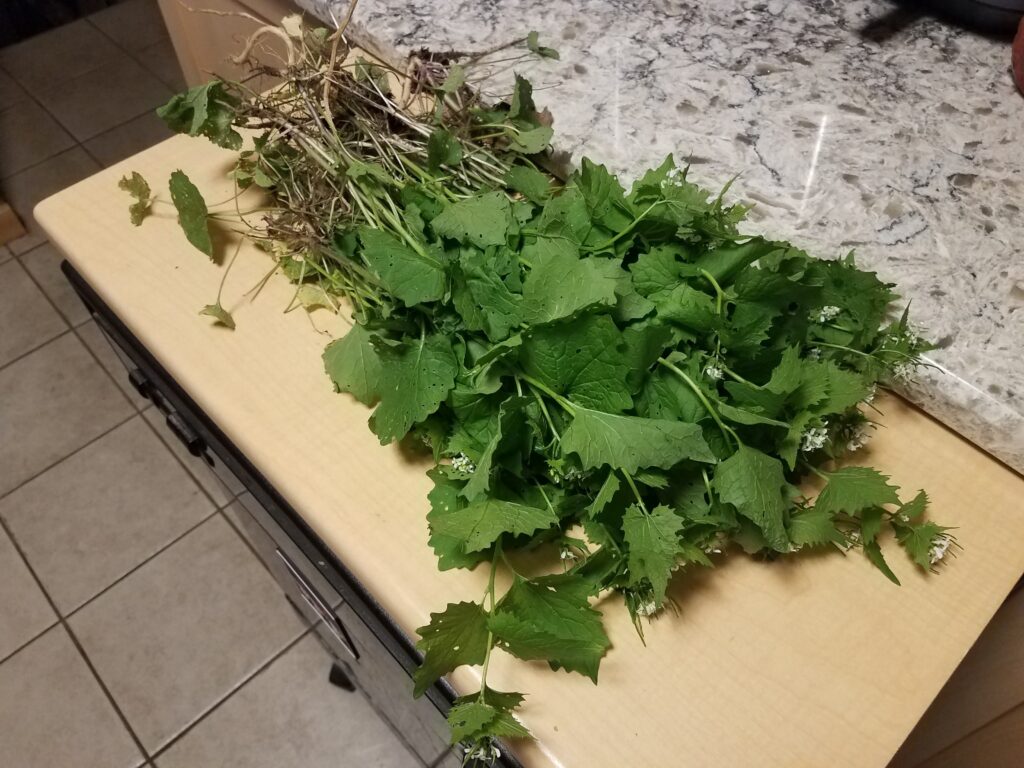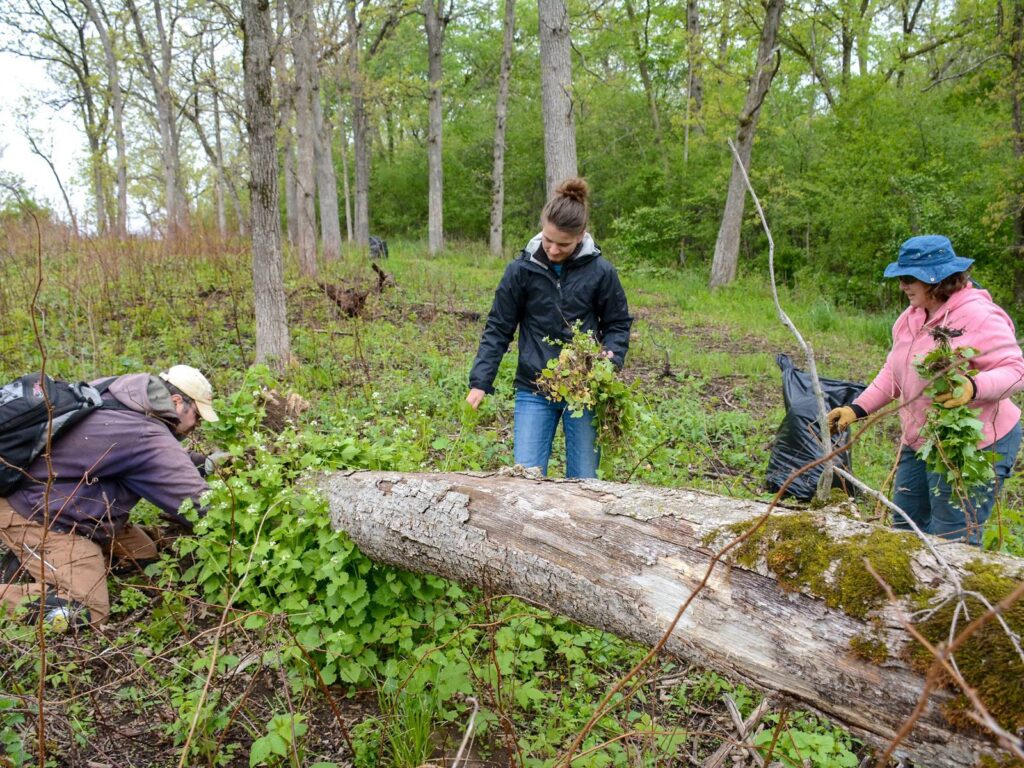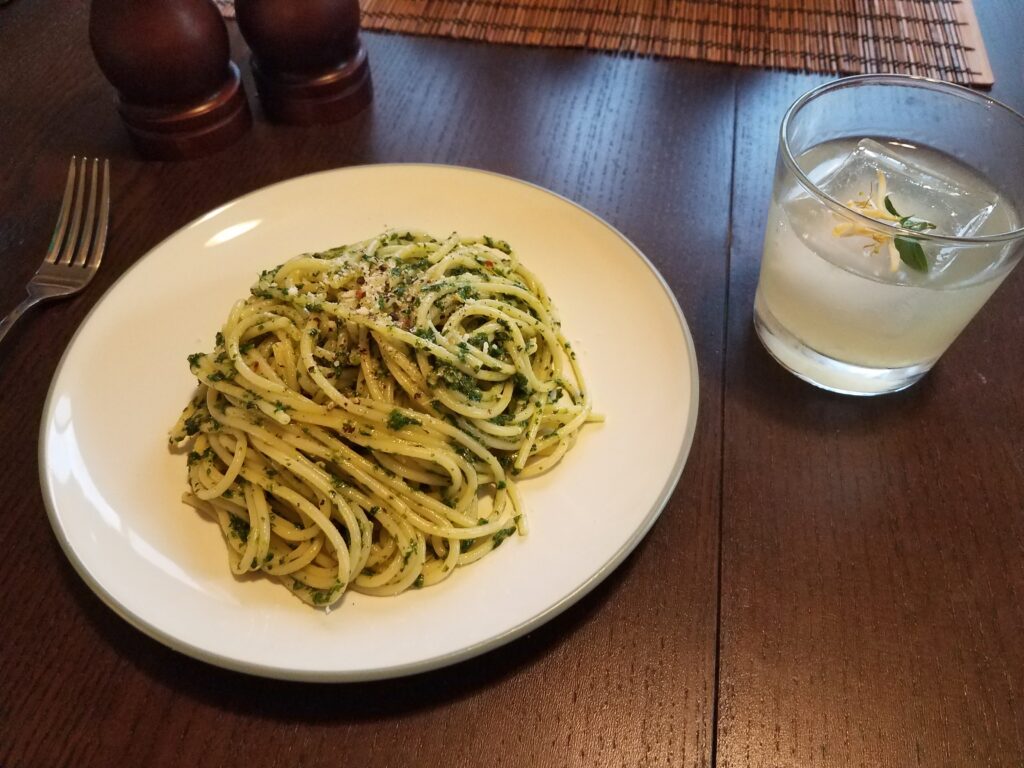May is – obviously – the best month of the year. The signs of the world coming back to life that start in April pick up in earnest in May, with the summer still stretching out ahead in the distance, offering seemingly infinite possibilities. (Plus, there’s my birthday.) I look forward to May’s arrival every year and try to hang onto it as long as possible as it slips into June. (And at a time when the news seems to be increasingly and more consistently upsetting, I feel the need to look for joy wherever I can.)
Timing is Everything
One of the things that makes me happy and helps me stay present throughout the year is cooking with seasonal ingredients, but I really try to suck the marrow out of May, as it were. I’ve previously written about using ephemeral flowers (such as violets and honeysuckle), [1] and foraged ingredients (such as ramps) [2] in the kitchen, but two years ago I discovered that (invasive) garlic mustard could be prepared for the table as well. [3]
At the time, it was too late for me to use these biennial weeds, as they had been pulled and were wilting, intermixed in a pile with other undesirables from my yard, so I figured I could do some experimentation the following year. But last year I spent the first week of May in Fiji and the following several months recovering from my first (and hopefully only) COVID-19 infection. [4] Next to nothing got done in the yard (or kitchen) last year, and I was scrambling to get my spring delivery of mulch spread before the first frost in November.

By the time garlic mustard was popping up in the yard this spring, I was busy at work and was prepping for a trip back east to see my dad. However, I knew the weeds needed to come out, whether or not I was going to cook with them, because once there were flowers, there would soon be seeds. While the seeds are most likely to germinate their first or second year in the ground, they are allegedly viable for up to 10 years. [5] The good news is that, as long as you are diligent about removing them before they go to seed, you should see fewer plants in your yard over time.
The Old College Try
The night before leaving town, I pulled what flowering stalks I could find in the shadier spots of my yard. I plucked the leaves and stuck them in the fridge in case I was able to cook with them after returning home. I will note that younger leaves are supposed to be more flavorful and less bitter; mine were not young… and they also sat in the fridge for the better part of two weeks, at which point I wondered if it was even worth attempting to make anything with them. With my expectations low, I still wanted to give it a shot.
I also didn’t want to kill us. There are trace amounts of cyanide in garlic mustard, and I have found conflicting guidance online, with some encouraging caution, suggesting not eating too much or too frequently, while others made no mention of it at all or said that the amounts were inconsequential and comparable to other common culinary plants. I also found disagreements as to whether first-year leaves or second-year leaves had more cyanide… or tasted better. For the record, I tried old and new leaves, leaves from first-year and second-year plants, and I couldn’t tell much difference.

Image credit: [6]
It is possible I was getting them all too late in the season, but I was also a little disappointed to discover that the flavor was not as impressive as I had been led to believe. Some blogs with garlic mustard recipes wax poetic about the amazing flavor of this plant – to the extent that you’d think they would rival their native contemporary, the highly prized (and highly hunted) ramp. As it turns out, there is a world of difference between the flavor and potency of the two, but fortunately I was able to let my single delivery of ramps this year shine through in this experiment, largely overshadowing the garlic mustard in the resulting dish.
Recipe: Garlic Mustard Pesto
This recipe is fine. I will definitely continue cooking with garlic mustard in the future for as long as I have it in my yard, but no small part of me wondered if the push to encourage its use in the kitchen is simply to support more people clearing an invasive plant from their yards and nearby woods. My standard for pesto is what my mom made every fall with armloads of basil from her garden, but I also think it’s unfair to hold garlic mustard to the standard of basil as an ingredient here, so I really tried to judge it on its own merits.
My verdict is that if you’re looking to make a pesto with a plentiful ingredient in the spring, garlic mustard will do the trick, but the final product is greatly improved when doctored with a few considerations:
- blanching the leaves in salted, boiling water will reduce the bitterness (but soaking them in water overnight in the fridge first will reduce the bitterness even more)
- amending the ingredient list with another flavorful green leaf, such as basil (not in season) or ramps (if you can get them!) is probably necessary, because I don’t think the garlic mustard can carry this dish by itself
- I am trying to cook more vegan recipes in order to reduce my carbon footprint, but I also feel that cheese is really a necessary component here, for the same reason mentioned above. [Note: I have been gleefully swapping pecorino for parmesan in my recipes for at least a year, assuming that sheep contribute less of a net carbon footprint than cows, but that is something I’ll need to confirm and cover in a future post. Stay tuned…]

So without further ado, here is the recipe I used, adapted from Forager Chef: [7]
Ingredients:
- 8 oz garlic mustard leaves [younger = less bitter]
- 2 Tbs toasted pine nuts
- 1/2 c parmesan and/or pecorino [I use pecorino for everything now]
- a few ramp leaves [we happened to have ramps in our CSA, and I had a handful of leaves left over after making ramp dip!] or a garlic clove if you don’t have ramps
- 1 tsp lemon juice
- pinch of crushed red pepper
- salt to taste
- 1/2 c olive oil
Blanch garlic mustard leaves in salted boiling water for 30-60 seconds, cool immediately in an ice bath, squeeze water out of leaves in bunches, and chop them finely.
Combine garlic mustard leaves and the next six ingredients in a food processor. Stream in olive oil while the food processor is running. Add more lemon juice, red pepper, cheese, and/or salt to taste.
Toss with al dente pasta and a little pasta water.
~
I will absolutely try more recipes to the extent I can in the future, even though I’ve got less and less garlic mustard in my yard over time. At the very least, it helps me feel like I’m doing something productive with these invasive plants instead of simply sending them to the landfill.
Have you tried any garlic mustard recipes that you loved? If so, please share them here!
Thanks for reading (and weeding)!
[1] https://radicalmoderate.online/drinking-the-garden/
[2] https://radicalmoderate.online/rampin-up/
[3] https://radicalmoderate.online/proper-disposal-of-invasive-weeds-garlic-mustard/
[4] https://radicalmoderate.online/feeling-flirty/
[5] https://www.canr.msu.edu/ipm/Invasive_species/garlic_mustard/about_garlic_mustard
0 Comments